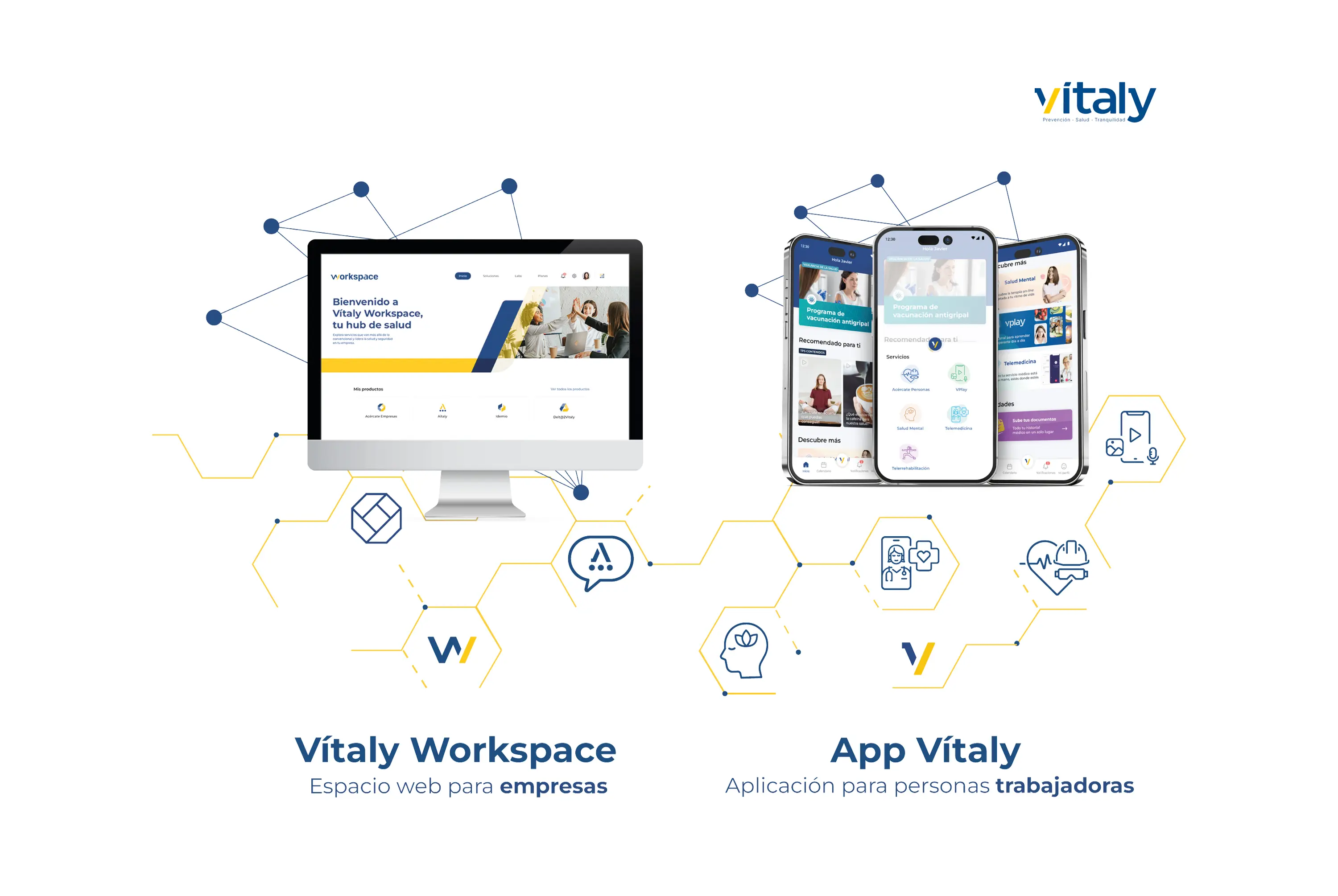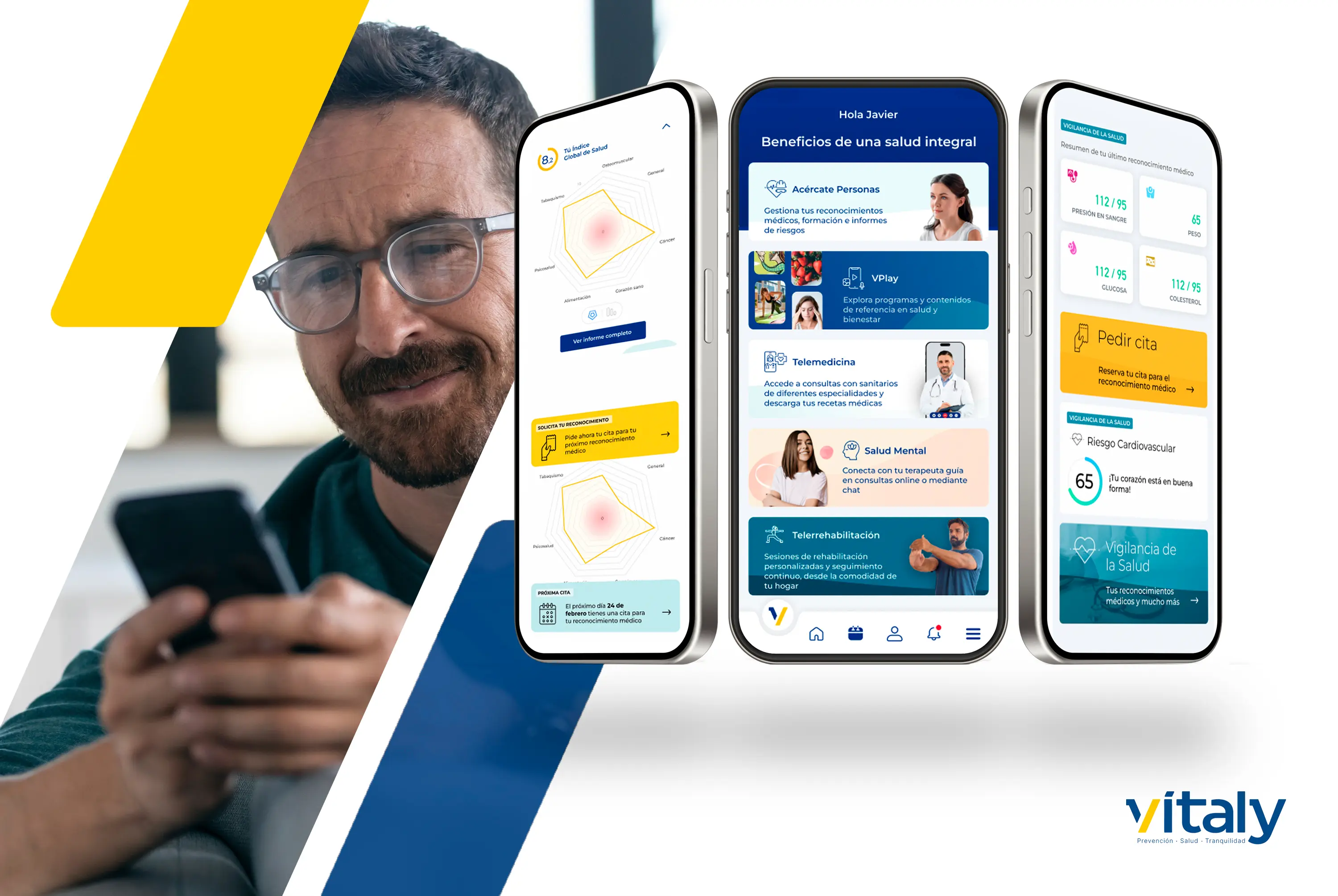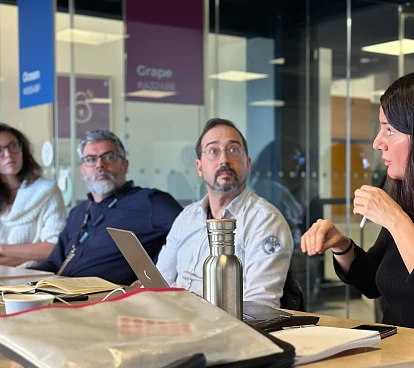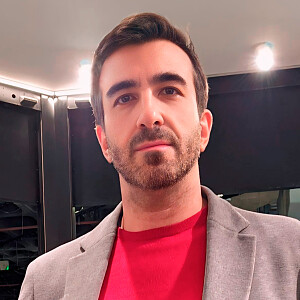
The digital ecosystem with which Vítaly reinvents healthcare
November 26, 2024
"We faced a very demanding objective in terms of timelines and technological requirements, and SNGULAR demonstrated precision and commitment to help us achieve success. Additionally, in the last two years, we’ve increased SNGULAR’s participation in Vítaly's technological initiatives tenfold, clearly reflecting their significant value to our efforts".
Javier Montesinos, Vítaly’s Technology Director
An Experience Beyond Traditional Solutions
The digital health market and healthcare transformation represent a sector undergoing rapid global expansion. The convergence of technology and medical services has created a dynamic environment where innovation is redefining how health is prevented, diagnosed, and treated.
Key factors driving this transformation include the increasing demand for healthcare services due to an aging population, the rise in chronic diseases, a shortage of healthcare professionals in many countries, and the need for more resilient and efficient systems.
This has enabled the development of solutions designed to enhance patient experience, reduce operational costs, and provide personalized and proactive healthcare services that meet high clinical, safety, and privacy standards, adding an additional layer of complexity.
In this context, companies like Vítaly are positioned to lead, offering solutions that connect patients and professionals with advanced technologies, improving the quality, accessibility, and personalization of healthcare.
With a patient-centered approach, Vítaly combines traditional healthcare services with advanced digital tools to improve accessibility, efficiency, and quality of care.
As Clara Jiménez, Marketing Manager at Vítaly, explains, "the company stands out for its commitment to integrating technologies such as artificial intelligence, data analytics, and mobile applications, enabling healthcare professionals to optimize diagnoses, personalize treatments, and deliver more proactive care."
Vítaly Health Ecosystem: A Unique Concept in the Health and Wellness Market
We spend an average of 4 hours a day using our mobile devices. Wouldn’t it be interesting if some of this time could also be dedicated to taking care of our health?
There are many apps on the market designed to address this need, albeit in isolation, which poses a series of challenges for both users and companies. Fragmentation of information and services creates inefficiencies, increases complexity, and hinders obtaining a holistic view of health and wellness.
To address this, Vítaly has created its Vítaly Health Ecosystem (ESV), an innovative integrated platform that combines a variety of services synergistically. According to Joan Carles Aguilar, Innovation Director at Vítaly, *"our approach is to incorporate vertical solutions that excel in their specific areas, providing a comprehensive view of an individual’s health status. By doing so, *we significantly enrich the experience and outcomes for users. Different solutions are connected, and knowledge is integrated; no operator offers this approach."
Two Distinct Environments
The ESV is built around two major applications. On one hand, there is Workspace, a comprehensive application serving corporate needs. It includes everything from service indicators to intervention strategies that any company might need to implement.
On the other hand, there is the mobile app, aimed at individual employees. It offers everything from traditional telemedicine services or personal medical records to cutting-edge functionalities such as AI-assisted telerehabilitation and online psychology services. These services are highly accessible and user-friendly, available at any time on mobile devices, whether at work or at home.
All the content on the mobile app is structured around a solution called Vplay – exclusive to the ESV – which enables users to explore live multimedia content and wellness reference programs, personalizing the content based on individual usage and the synergy with each module within the ecosystem.
For instance, if an employee shows high cholesterol levels in regular medical check-ups, the app suggests content to help improve dietary and lifestyle habits. Similarly, if high stress levels are detected through the mental health app, the platform automatically activates to provide materials focused on relaxation techniques. This personalization, combined with a recommendation system, ensures users receive relevant and engaging information—a “Netflix” of health content.

Accelerating Innovation with Google Cloud
The Vítaly Health Ecosystem has been in development for several years. In 2021, Vplay was created and launched in 2022 alongside an external telemedicine app. These initial efforts validated the model and highlighted the need to integrate various services into a single platform. In 2023, the current health ecosystem was developed, encompassing a wide range of services such as mental health, telemedicine, physiotherapy, and medical check-ups.
During the project’s development, several challenges arose, chief among them being the need to integrate legacy and third-party solutions into a new platform with new technologies. This involved defining the necessary architecture, assessing existing systems, and implementing solutions to integrate all platforms under one umbrella.
Modular Microservices Architecture
As Iván Guiberteau, Project Manager at SNGULAR, explains, "to ensure interoperability between various health systems, a highly modular solution based on microservices was developed, offering great technological flexibility, all on Google Cloud."
The choice of Google Cloud as the technology infrastructure for the ESV was no coincidence. Its capacity to ensure scalability, security, and flexibility allowed Vítaly to develop an innovative, robust solution compliant with regulations, capable of integrating and scaling services while reaching a wide user base.
"During the initial phases, we focused on designing an efficient network architecture that connected all ecosystem elements while complying with the company’s security policies and adhering to ISO 27001 and the National Security Framework (ENS)," explains Rafael González, Systems/Cloud Manager at Vítaly.
The implementation of Google Cloud’s architecture followed a two-phase approach. In the first phase, the core infrastructure was deployed, including GKE (Google Kubernetes Engine), Cloud SQL, networking, and other foundational services. The second phase focused on the software layer, with SNGULAR’s development teams deploying applications using CI/CD tools on GKE.
Given the priority of health data security, all microservices applications are protected via Cloud Armor. Every app request passes through a security gateway, identifying the user, application, and requested resource to ensure access control. Private resources, like databases, are secured with Zero Trust Network Access tools, restricting access to Vítaly’s IT staff and authorized providers.
This approach guarantees a secure, interconnected environment optimized for the needs of a cloud-based health services ecosystem.

The Migration to GKE: A Key Milestone
As previously mentioned, the foundation of the ESV, alongside legacy applications, was the Vplay health recommendations platform. Initially launched as a small experiment on Cloud Run, Google Cloud’s serverless container solution proved ideal for early-stage projects due to its simplicity and scalability. However, the platform’s success, incorporating features like live streaming and video platforms, led to a significant increase in microservices. This growth necessitated a more scalable approach.
Addressing Scalability Needs
Migrating to GKE became the solution to this challenge. GKE, a large-scale container orchestration system, provided greater control over platform growth, high availability, and the ability to handle increasing traffic and processing demands. Additionally, GKE simplified managing the platform's complexity as it expanded with more microservices and interdependencies.
Integration with other Google Cloud services, such as Cloud Armor for security and Cloud Tasks for asynchronous task management, further solidified GKE as the platform of choice. This seamless integration enabled the construction of a more robust, comprehensive solution.
Rogelio Gragera, Development Manager at Vítaly, highlights, "For application development, we used the Spring Boot framework, which both Vítaly and SNGULAR are familiar with for creating and maintaining applications. For the frontend, we chose Ionic, enabling us to manage a single repository and deploy across multiple platforms."
Challenges and Achievements of the Migration
The migration to GKE was not without its hurdles. The coexistence of services on Cloud Run and the newly deployed GKE services created a hybrid environment that required meticulous management. The development team had to ensure interoperability among services while handling data migration and adapting business logic between platforms.
Despite these challenges, the migration to GKE was a resounding success. The ESV saw significant improvements in availability and performance, translating into a better user experience. GKE’s focus on automation and container management allowed the development team to prioritize innovation and new feature creation, accelerating the platform’s development pace.
The Vítaly case demonstrates how migrating to GKE can be a strategic step for companies experiencing rapid growth and requiring a scalable, robust platform. GKE’s flexibility, integration capabilities with Google Cloud services, and automation-centric approach make it a driver of innovation and growth for companies seeking to lead digital transformation in their industries.
Vplay: The Netflix of Health with Google Cloud and AI
As mentioned throughout this post, Vplay, Vítaly’s content platform, has become a core pillar of its health ecosystem. Its development was made possible by a robust technological infrastructure backed by Google Cloud, enabling it to offer a personalized, agile, and engaging multimedia experience.
Google Cloud provides powerful tools like BigQuery and the Google Data Platform to analyze massive amounts of real-time user behavior data, process it, and structure it for practical use.
Using AI and machine learning tools, such as AI Platform and TensorFlow, Vplay can recommend content tailored to specific interests, such as stress-reduction techniques or sleep improvement strategies. This enhances content relevance and boosts user engagement.
The platform operates similarly to the recommendation algorithms of on-demand content services but focuses entirely on health and wellness.

The Formula for Success: Innovation, Personalization, and Strategic Partnerships
The Vítaly Health Ecosystem has had a remarkable impact on the health and wellness sector, achieving high satisfaction levels among both users and within the company.
Joan Carles Aguilar, Innovation Director at Vítaly, shares, "With over 200,000 active users and a monthly growth exceeding 2,000 new daily registrations, one of the key factors for the app's success is how easily new users can sign up, log in, and begin using its features without obstacles."
This ease of use is coupled with customization of the user experience, empowering individuals to take an active role in their health care through accessible, tailored content that meets their preferences and needs.
Technology and Collaboration Driving Success
The choice of Google Cloud technology has been another essential component of success. Its scalability, flexibility, and security have allowed Vítaly to evolve the ESV into a solid, reliable platform, capable of adapting to dynamic changes and continuous development iterations, sprint by sprint.
Moreover, collaboration with SNGULAR, Vítaly's technology partner for this and other projects, has been instrumental. Javier Montesinos, Vítaly’s Technology Director, remarks, "We faced a very demanding objective in terms of timelines and technological requirements, and SNGULAR demonstrated precision and commitment to help us achieve success. Additionally, in the last two years, we’ve increased SNGULAR’s participation in Vítaly's technological initiatives tenfold, clearly reflecting their significant value to our efforts."
A Vision for the Future
In summary, the success of the Vítaly Health Ecosystem stems from a combination of factors: an innovative and comprehensive approach, a personalized and engaging content platform, strong partnerships, cutting-edge technology from Google Cloud, and a forward-thinking strategic vision. The platform positions itself as a market leader in health and wellness, with significant growth potential and a positive impact on people’s lives—and this is just the beginning.
Miguel Ángel Vargas, Business Manager at SNGULAR, concludes, "The outcome of this project has been incredibly positive, not only because of the final product but also due to the journey we’ve taken together. Vítaly brought its business vision, while SNGULAR contributed technological expertise. The results speak for themselves."
Our latest news
Interested in learning more about how we are constantly adapting to the new digital frontier?

Insight
January 23, 2025
Scrum roles and responsibilities: a step towards transparency and engagement

Tech Insight
January 13, 2025
How to bring your application closer to everyone

Tech Insight
December 19, 2024
Contract Testing with Pact - The final cheetsheet

